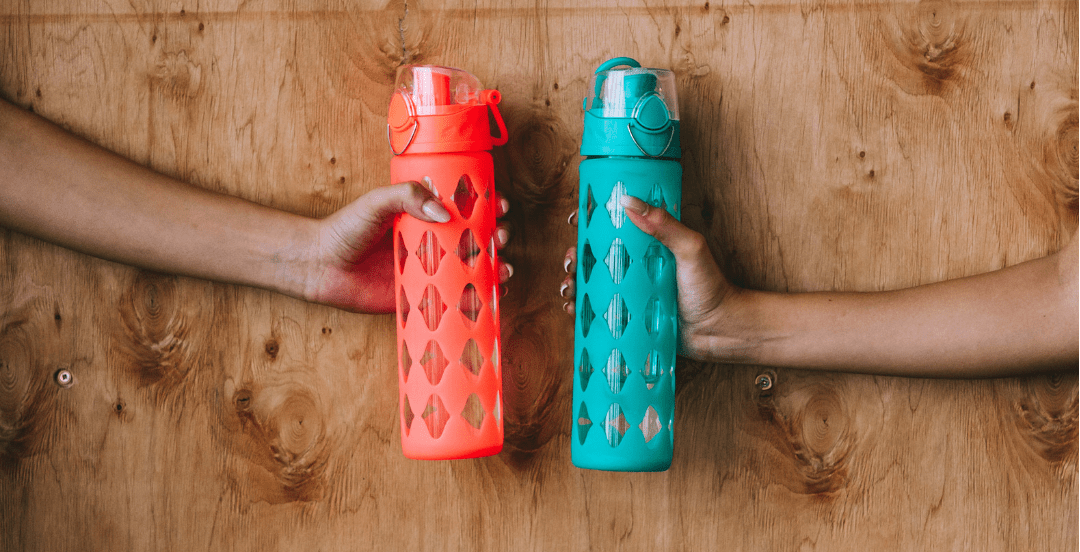Glass, Plastic or Stainless Steel: Which Water Bottle Is Best?
- Category: Recipes & Wellness, Seasonal
- Posted On:

We all know that drinking enough water is essential to good health, and carrying a bottle makes it easy to stay hydrated. But which type is best?
A stroll down the water bottle aisle will leave you even more confused. Water bottles come in an array of materials, sizes, colors, and styles. With so many choices available, it can be hard to know which type to choose. The good news is that glass, stainless steel, and reusable plastic bottles all have their pros. Read on to get the lowdown on the type of water bottle that would best suit your needs.
Glass Water Bottles: Pros and Cons
There’s a reason why glass has long been the container of choices for liquids and solids alike: Things you drink and eat from glass simply taste better. If “purity of taste” is your main concern, glass bottles offer a clear flavor advantage. It’s also free from chemicals, safe to wash in a dishwasher, and (in most cases) recyclable.
However, glass is breakable, so it’s not always a great choice for younger kids or slippery conditions. Glass does tend to cost more than other options, even though it doesn’t usually last quite as long.
When buying glass bottles, look for options made from borosilicate, as it’s stronger, lighter, and handles a greater temperature range than typical glass. Also, make sure the glass has been tested and does not contain lead or cadmium.
Plastic Water Bottles: Pros and Cons
First, let’s be clear that we’re talking reusable plastic bottles, rather than single-use or disposable bottles. Plastic bottles tend to weigh less, making them a natural choice when you’re on the move. Many are also dishwasher safe. Plastic water bottles tend to cost less than glass or stainless options, but there are a few things to keep in mind before making a purchase.

Some plastics contain phthalates, PVC, and BPA a chemical that lab tests have linked to cancer. Though BPA has been banned in some plastic products — such as baby bottles and sippy cups — it's often replaced by a chemical called BPS that may also be toxic, as well as harmful. Check labels carefully, and look for the number “7” printed in the plastic, as this can be an indicator of BPA content.
Stainless Steel Water Bottles: Pros and Cons
If you’re committed to having an icy cold drink, look to stainless steel. Not only does steel keep your drink colder for longer than any other type of bottle, but steel is also the longest lasting. When made from culinary grade, lead-free steel, there’s no danger of chemical leaching, either. Another plus: steel bottles are recyclable, so you won’t be adding to a landfill.
On the “con” side, some users do report a metallic taste, and steel bottles tend to cost more than glass or plastic. If you choose to go steel, look for lead-free, stainless options marked as food grade #304 or 18/8, which indicates an 18 percent chromium and 8 percent nickel content.
One thing we can all agree on: Avoiding single-use plastic bottles is a good choice for the environment. Did you know that Americans go through about 50 billion disposable water bottles per year, but only recycle about 23 percent of them? That creates a lot of avoidable waste, not to mention an additional strain on your wallet. If you drink the recommended eight glasses of H2O per day from a tap, it’ll cost you less than $.50 per year; drink those eight glasses from disposable bottles, and you’re spending almost $1,500.
Whether you choose glass, reusable plastic, or steel bottles, give yourself a pat on the back for making a choice that benefits the planet and your health.